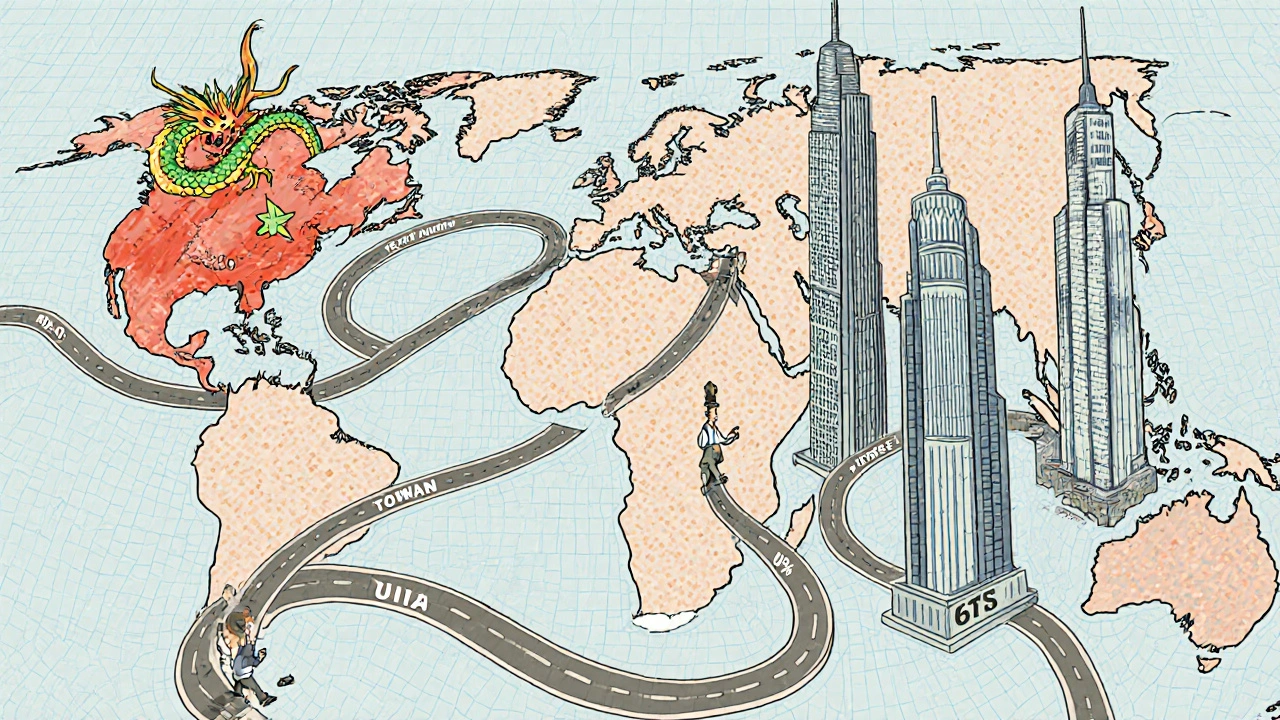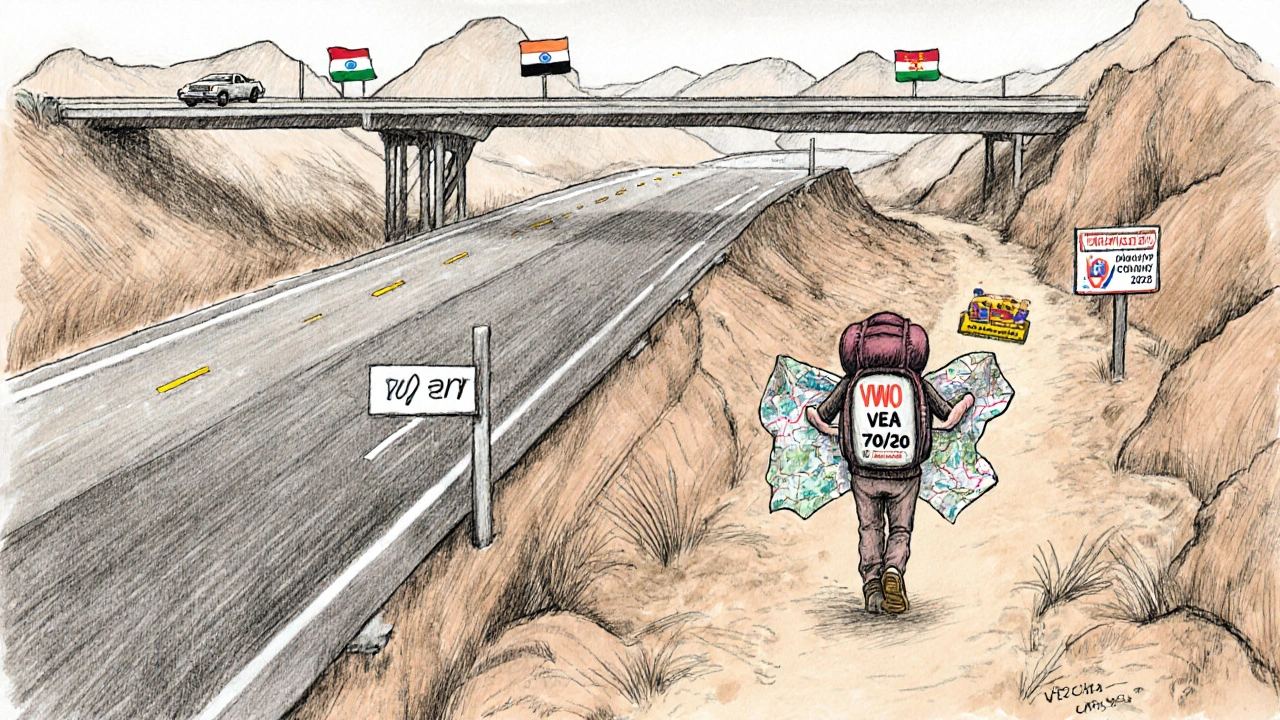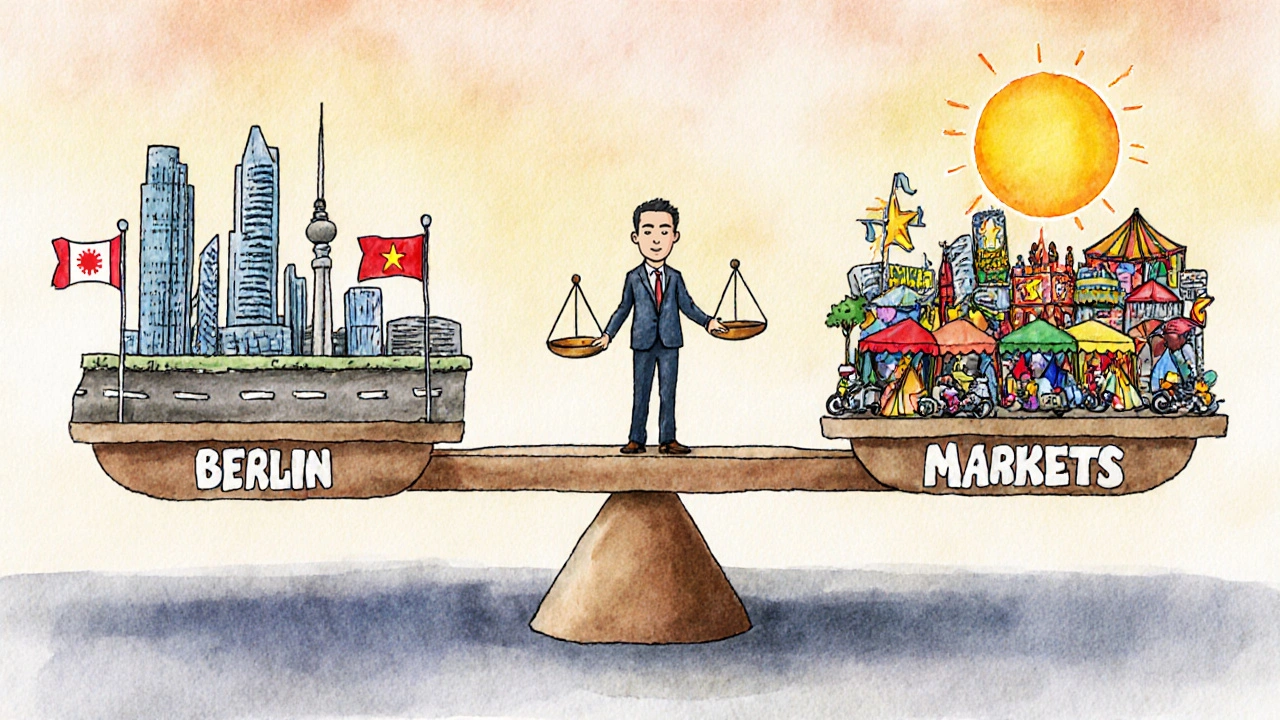International Index Fund Allocation Calculator
How Your Allocation Affects Returns
Based on Morningstar research showing 70/30 is the optimal risk-reward balance over 20+ years. See how your allocation impacts potential returns and volatility.
Why Your International ETF Allocation Matters More Than You Think
If you own a total stock market fund like VT or VTI, you’re already invested in international stocks-probably without even realizing it. But here’s the thing: not all international exposure is the same. The difference between a fund that puts 70% in developed markets and 30% in emerging markets versus one that splits it 50/50 can swing your returns by tens of thousands of dollars over a decade. It’s not about picking winners. It’s about understanding how the pieces fit together.
Developed markets aren’t glamorous. They’re stable. Think Japan, Germany, Canada, Australia. These are countries with strong legal systems, reliable financial reporting, and decades of market history. Emerging markets? That’s India, Vietnam, Brazil, Saudi Arabia-places where the economy is growing fast, but the rules are still being written. One is a well-maintained highway. The other is a new road with potholes, but maybe a shortcut to the future.
How Much Should You Really Have in Emerging Markets?
The standard advice you’ll hear from Vanguard, BlackRock, and Schwab is this: keep about 25% to 30% of your international exposure in emerging markets. That means if you’re putting 30% of your total stock portfolio overseas, roughly 7-9% should be in emerging markets. Why this range? Because it’s the sweet spot between risk and reward.
Back in 2022, when the U.S. dollar surged and China cracked down on tech companies, emerging markets dropped nearly 35%. Developed markets fell about 20%. That’s a big gap. But in 2023, when inflation cooled and China reopened, emerging markets bounced back hard-outperforming developed markets by 12% in some cases. That’s the cycle. You don’t time it. You just stay in it.
Morningstar’s research shows that investors who stuck with a 70/30 split over the last 20 years got the best risk-adjusted returns. Not the highest returns. The best balance. Going above 35% in emerging markets increases volatility without meaningfully boosting long-term gains. Below 20%, and you miss out on the growth engine that’s been driving global economic expansion since the 2000s.
What’s in These Indexes? The Real Breakdown
Don’t assume “emerging markets” means equal parts India, Brazil, and Indonesia. It doesn’t. As of April 2023, China alone made up over 31% of the MSCI Emerging Markets Index. Taiwan was next at 14.8%, then India at 13.7%. Together, those three countries accounted for nearly 60% of the entire index. That’s not diversification-that’s concentration.
Compare that to developed markets. The MSCI World Index is dominated by the U.S., which alone holds 67.7% of the weight. Japan and the U.K. round out the top three, but the rest is spread across 20 other countries. So when you buy an international fund, you’re mostly getting U.S. tech and Chinese manufacturing. That’s the reality.
Some funds try to fix this. iShares’ EMIM includes small-cap stocks, which adds about 8-12% more exposure to smaller, less-known companies. Vanguard’s VWO sticks to large and mid-caps only. The difference? EMIM might give you more upside if a Vietnamese startup takes off. But it also means more volatility. You pay a tiny bit more in fees, but you’re getting a broader slice of the pie.

Why Provider Choice Changes Everything
Not all international funds are built the same. And it’s not just about expense ratios. It’s about who’s doing the classifying.
Take South Korea. MSCI says it’s a developed market. FTSE says it’s emerging. That one difference can shift your allocation by 2-3% overnight. If you’re using Vanguard’s VEA (which follows FTSE), you’re putting South Korea in emerging. If you’re using iShares’ IDEV (which follows MSCI), it’s in developed. Same country. Different bucket.
That’s why experts like Taylor Larimore from Bogleheads say: stick with one provider. Don’t mix Vanguard’s developed fund with iShares’ emerging fund. You’ll end up with overlapping exposure, double-counting countries, and a portfolio that doesn’t reflect what you think it does.
Also, watch out for funds that claim to be “total international” but are actually just developed markets. Some older funds still use the MSCI EAFE index, which excludes the U.S. and Canada. That’s not international. That’s just “not-U.S.” You want funds that track the MSCI ACWI ex-US or FTSE All-World ex-US. Those include everything.
The Hidden Risk: Currency and China
Here’s something no one tells you: your international fund isn’t just buying stocks. It’s buying currencies. When the U.S. dollar strengthens, foreign stocks drop in dollar terms-even if they’re rising in their home currency. That’s why 63% of financial advisors recommend staying unhedged. Hedging eats away at returns over time. Yale’s 2022 study found hedging reduces long-term returns by 0.4% to 0.7% per year. That’s not a small cost.
And then there’s China. It’s the elephant in the room. It’s the biggest weight in emerging markets. But it’s also the most politically risky. Regulatory crackdowns, property crises, trade tensions-China’s volatility isn’t just market risk. It’s policy risk. BlackRock’s research warns that if China’s weight drops below 20% in future indexes, it could force funds to rebalance heavily, increasing tracking error by 2.5% to 3.5%. That means your fund won’t track the index as well. And you’ll pay for it in performance.
That’s why Vanguard announced in September 2023 it’s adjusting its emerging markets index to reduce China’s weighting. By 2025, we’ll likely see a new classification: Advanced EM (China, Taiwan, India, South Korea), Secondary EM, and Frontier Markets. That’s not just a name change. It’s a structural shift that will reshape how funds allocate money.

What Should You Do Right Now?
You don’t need to overthink this. Here’s the simplest, most effective path:
- If you’re new to international investing: Use a single fund like Vanguard’s Total International Stock Index Fund (VTIAX or VGTSX). It automatically holds 72% developed, 28% emerging. Done.
- If you want to build your own: Use Vanguard’s VEA (developed) and VWO (emerging) in a 70/30 split. Keep it simple. Keep it cheap. Expense ratios are 0.03% and 0.22% respectively.
- Avoid mixing providers. Don’t pair iShares with Vanguard unless you know exactly what you’re doing.
- Never chase performance. If emerging markets are up 20% this year, don’t overweight them. Stick to your plan.
- Ignore short-term noise. If China drops 15% in a month, don’t panic. That’s normal.
The goal isn’t to beat the market. It’s to own it-without taking unnecessary risks. International exposure isn’t optional anymore. It’s table stakes. But how you allocate it? That’s where real wealth is built.
What’s Next for International Index Funds?
The future of international investing isn’t about developed vs emerging anymore. It’s about tiers. By 2027, most major index providers will use a four-tier system: Developed, Advanced Emerging, Secondary Emerging, and Frontier Markets. India is expected to move into Advanced EM by 2026. Vietnam and Indonesia might join the Secondary EM group. Saudi Arabia could be reclassified as Advanced EM as its economy opens up.
That means funds will need to rebalance. And if you’re holding a fund that doesn’t update its methodology regularly, you’ll be stuck with outdated exposure. That’s why you need to check your fund’s prospectus every year. Look for updates on index provider changes. MSCI releases its classification review every June. Vanguard and iShares update their funds shortly after.
Also watch for factor-based ETFs like iShares’ EIMM (MSCI EM Min Vol). These target lower-volatility emerging markets stocks. They’re not for everyone-but if you’re nervous about EM swings, they’re a smart alternative to pure market-cap funds.
Final Thought: It’s Not About Timing. It’s About Consistency.
There’s no perfect allocation. There’s no magic number. But there is a proven path: stay diversified, keep costs low, and stick to your plan through ups and downs. The investor who bought VWO in 2018 and held through the 2022 crash and 2023 rebound didn’t outsmart the market. They just stayed in it.
International index funds aren’t about betting on countries. They’re about betting on the global economy. And that’s a bet that still has a long way to go.

Comments (4)
Dave McPherson
Look, I get it - you’re telling me to just buy VTIAX and call it a day. But let’s be real: if you’re not actively monitoring index provider classifications, you’re basically letting MSCI and FTSE play Jenga with your portfolio while you nap. I’ve seen people get wrecked because they thought ‘developed’ meant ‘safe’ - until South Korea got reclassified and their ‘conservative’ fund suddenly had 18% China exposure. That’s not diversification, that’s delusion wrapped in an ETF ticker. And don’t even get me started on hedging. You think paying 0.4% extra per year to ‘protect’ yourself from currency swings is smart? Nah. You’re just feeding the banks while your returns wither like a cactus in a monsoon. Stay unhedged. Stay dumb. Stay rich.
RAHUL KUSHWAHA
As someone from India, I appreciate this breakdown 😊. We’re not just ‘emerging’ - we’re the slow-burn engine behind global growth. But yeah, China’s dominance is wild. 31%? That’s like having one player on your fantasy team making up half your points. I’m glad Vanguard’s adjusting weights - it’s about time. Still, I’d love to see more small-cap Indian exposure. Maybe EMIM? The fees are a bit higher, but if it means I’m not just betting on TCS and Reliance again… worth it. Thanks for writing this - it’s rare to see us treated like more than a footnote.
Julia Czinna
I really appreciate how grounded this post is. No hype, no ‘get rich quick’ nonsense - just clear, factual context about why allocation matters more than picking the ‘hot’ market. The point about currency unhedging is critical, and I’m glad you cited Yale’s study. So many investors think hedging is ‘safer,’ but they don’t realize the long-term drag. Also, the note about provider consistency? Spot on. I once mixed Vanguard and iShares funds and ended up with 4% overlap in Taiwan. Took me three months to untangle it. Lesson learned: stick to one family. And yes, check the prospectus every June. It’s boring, but it’s the difference between owning the index and owning a ghost version of it.
Laura W
Bro. China’s 31%? That’s not an EM fund. That’s a China fund with a side of India. And don’t even get me started on how ‘developed’ markets are just U.S. tech in a tuxedo. If you’re not seeing this, you’re not investing - you’re just scrolling. EMIM over VWO? Yes. Small caps are the wild card. And yes, Vietnam’s gonna be the next big thing - just wait till their manufacturing pipeline fully lights up. Stop chasing yields. Start chasing structure. And for the love of god, don’t mix providers. You’re not a portfolio architect - you’re a coupon clipper with a spreadsheet. Fix your tools first.